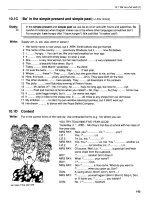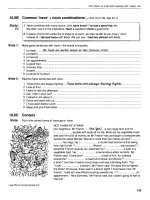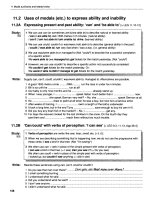Word order position of verbs
Bạn đang xem bản rút gọn của tài liệu. Xem và tải ngay bản đầy đủ của tài liệu tại đây (12.45 KB, 1 trang )
Word order: position of verbs
Verbs
usually go immediately after subjects. There are mainly two kinds of verbs: auxiliary verbs and main verbs.
A verb can consist of just one word. Affirmative sentences in the simple present and simple past tenses have
one-word verbs.
John
broke
another window yesterday.
Alice
invited
me to her party.
He
rejected
the offer.
Sentences in other tenses have verbs consisting of more than one word. Note that in a three-word verb, the first
two are auxiliary verbs whereas the third one is the main verb.
They
have been invited
. (Auxiliary verbs: have, been; main verb: invited)
Susie
is writing
. (Auxiliary verb: is; main verb: writing)
Auxiliary verbs always go before main verbs.
In questions the auxiliary verb comes before the subject whereas the main verb goes after the subject.
Has
Susie arrived? (NOT Has arrived Susie?)
What
did
he say? (NOT What said he?)
In WH-questions, question words go before the auxiliary verbs.
We can form affirmative sentences without auxiliary verbs, but we cannot form questions or negatives without
them.
The only type of word that can go between the subject and the verb are adverbs of frequency. Examples are:
usually, often, never, seldom, always
and
occasionally
.
She
often
visits her friends in Singapore.
I
usually
get up at 7 am.
We
sometimes
watch action films.
When the verb consists of three words, the frequency adverb goes after the first.
I have
never
been invited to their parties. (NOT I have been never invited to their parties.) (NOT I have
been invited never to their parties.)
Other adverbs usually go at the beginning or at the end of a sentence.
Be first to know when grammar rules change! Sign up to our newsletter here: englishgrammar.org (It's free)
Powered by TCPDF (www.tcpdf.org)









